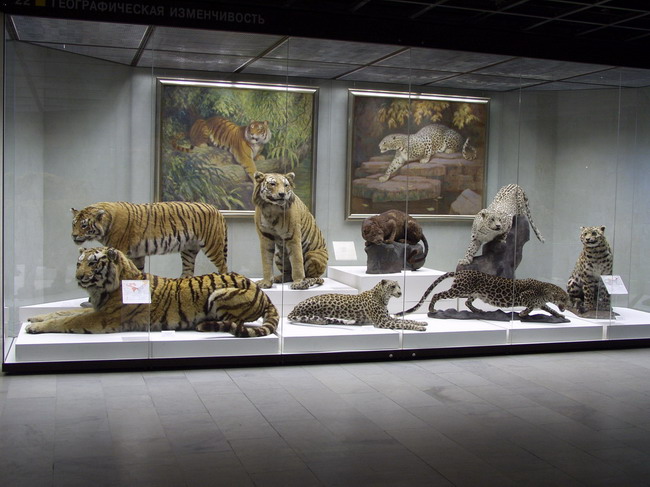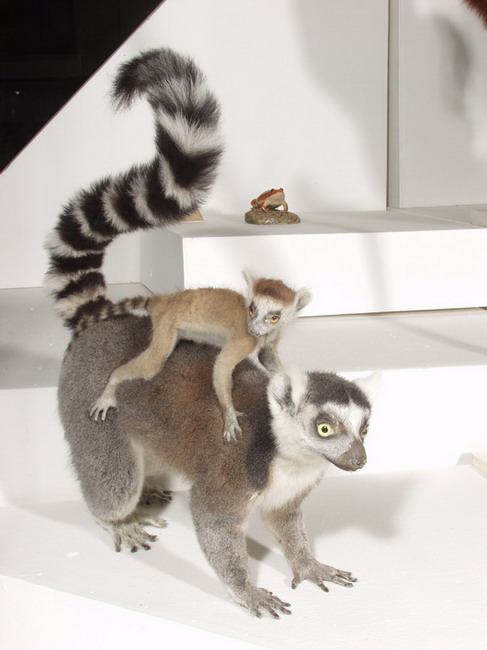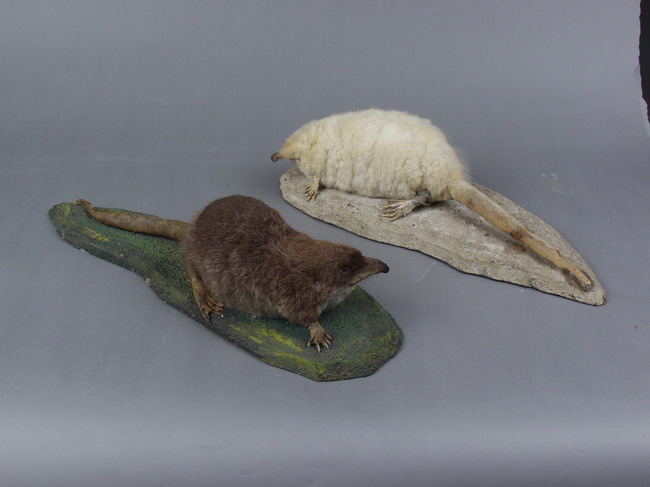Taxidermied Mammals collection
Curator: Igor Fadeev.
The collection
includes 2 543 specimens. It represents outstanding examples of taxidermy art,
including the largest collection of taxidermied animals made in the best in
Moscow taxidermic laboratory of Friedrich Lorenz. The outstanding work of the
Museum’s taxidermist Philipp Fedulov - taxidermied African and Indian elephants
– are the centerpiece of “The diversity of life on Earth” hall at Darwin museum.
Of great scientific
interest are the extensive collections of geographic and individual variability
in foxes and wolves. The collection also contains a significant number of taxidermied
foxes with all kinds of fur color variations made from skins of animals bred in
fur farms. This material had been purposefully selected by Alexander Kohts
since the very beginning of Darwin museum, as he wanted to demonstrate the wide
range of colors in animals at the permanent exhibition. To be noted are the
taxidermied representatives of the Mustelidae family (sable, marten, ferrets, etc.)
and squirrels with fur color variations. Moreover, the collection contains a
wide range of taxidermied animals of various species of wild cats (leopards,
tigers, cheetahs, lynxes, manuls) and bears, as well as some unique specimens
of black and white lynx.
An extensive
collection of taxidermied primates comprises five gorillas, twelve chimpanzees,
twelve orangutans, a large number of taxidermied Old World monkeys and lemurs,
among which of certain interest are four taxidermied aye-ayes. These materials
were purchased by Alexander Kohts from various European companies.
Of great scientific
and historical value is the taxidermied Tibetan bear (on display at permanent
exhibition hall) and the Tibetan antelope made from the skins of animals collected
in Tibet by Nikolay Przhevalsky, a Russian geographer and a renowned explorer
of Central and East Asia. To be noted is the white taxidermied squirrel, collected
in 1906 in the Ussuri krai, Russia.
A significant part of
the taxidermied mammals of the domestic fauna is made of skins received from
the Moscow fur factory. Furthermore, the collection includes some interesting
examples of Western European taxidermy art, and specimens that used to belong to renowned
foreign collectors and scientists.
Since the foundation of Darwin museum, a collection of taxidermied domestic animals has
also been gathered. Today a large selection of different dog breeds
demonstrates the wide possibilities of breeding and preserves samples of old breeding
standards.
The great
number and diversity of the specimens allow creating permanent and temporary exhibitions
on almost any topic related to natural history. The collection is still being
regularly replenished.

A showcase with the geographical variability in tigers (Panthera tigris L.) and leopards (Panthera
pardus L.), permanent exhibition of Darwin museum.

Ring-tailed lemur
(Lemur catta L.). A female with an offspring.

Russian desman (Desmana moshata L.), a specimen with the normal color on the left, an albino specimen on the right.









